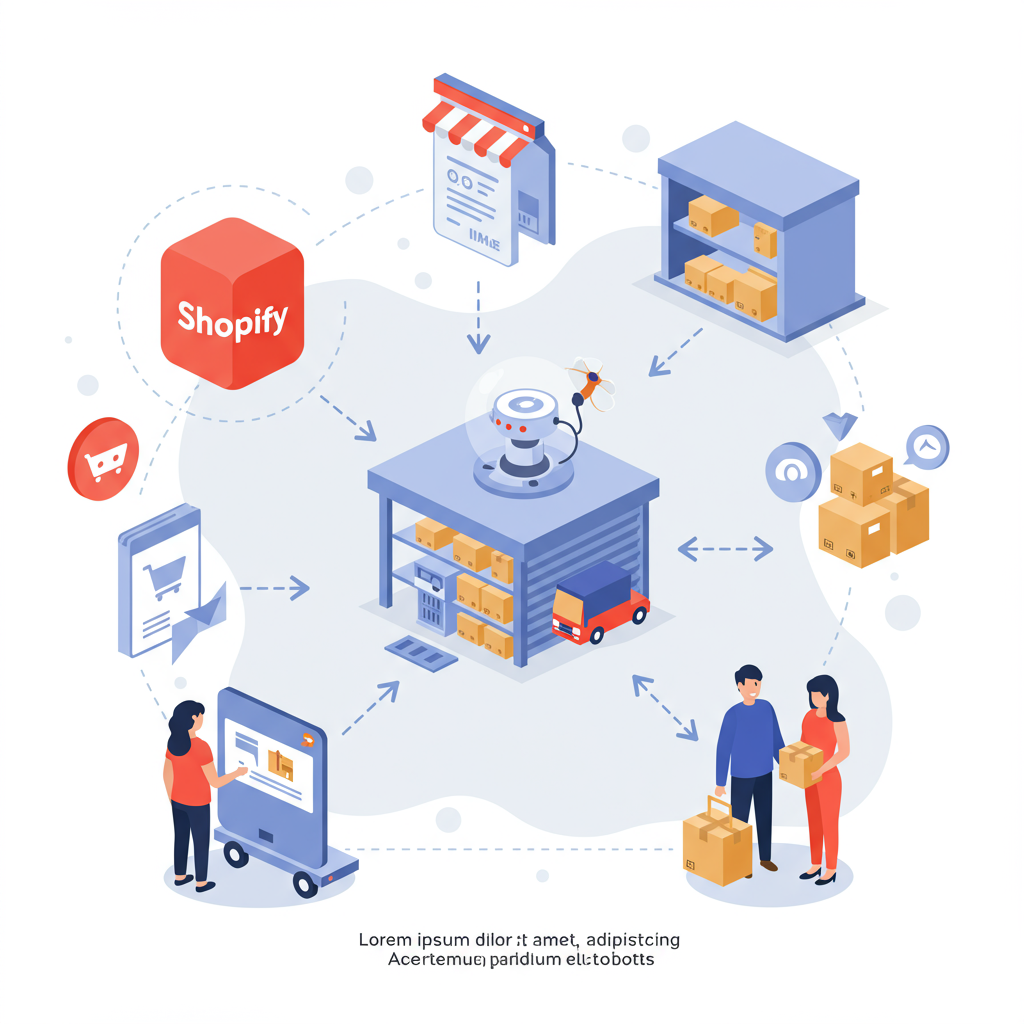Transforming Your E-commerce Operations for Efficiency and Growth
As a Shopify merchant, you know that getting products from your warehouse to your customer’s doorstep is more than just a simple transaction. It’s a complex dance involving order processing, inventory management, shipping, and customer communication.
For many of us, especially as our businesses grow, managing these tasks manually can quickly become overwhelming, leading to errors, delays, and ultimately, unhappy customers.
This is where fulfillment automation steps in. It’s not just a buzzword; it’s a strategic imperative for any Shopify store looking to scale efficiently and provide an exceptional customer experience.
In this comprehensive guide, I’m going to walk you through everything you need to know about automating your Shopify fulfillment process. My goal is to help you reclaim your time, reduce stress, and boost your bottom line.
So, why should you even consider automating your fulfillment? The benefits are numerous and impactful, directly affecting your operational efficiency and customer satisfaction.
Firstly, automation significantly saves time. Imagine the hours you spend manually generating shipping labels, updating inventory, or sending tracking information. Automation handles these repetitive tasks instantly.
Secondly, it drastically reduces human error. Manual data entry is prone to mistakes, whether it’s an incorrect address, a wrong product picked, or an inventory miscount. Automated systems follow predefined rules, minimizing these costly errors.
Thirdly, automation enables scalability. As your order volume increases, a manual system quickly breaks down. Automated workflows can handle spikes in demand without requiring a proportional increase in staff or effort.
Fourth, it leads to improved customer satisfaction. Faster processing, accurate orders, and timely communication about their purchase journey all contribute to a positive buying experience, encouraging repeat business.
Finally, automation can lead to significant cost efficiencies. By reducing errors, optimizing shipping choices, and freeing up staff for more strategic tasks, you’ll see a positive impact on your operational expenses.
Now, let’s dive into the key areas within your Shopify fulfillment process where automation can make the biggest difference.
**Order Processing:** This is often the first point of contact for automation. You can set up rules to automatically tag orders based on product type, shipping method, or customer segment.
For example, orders containing “fragile” items could be tagged for special handling, or orders from a specific region could be routed to a particular warehouse or shipping carrier.
**Inventory Management:** Keeping track of stock levels is critical. Automation can sync inventory across multiple sales channels, preventing overselling and ensuring accurate stock counts.
You can also set up automated alerts for low stock levels, prompting you to reorder before you run out, or even automatically hide products that are out of stock.
**Shipping and Tracking:** This is perhaps the most impactful area. Automation can generate shipping labels, calculate the best shipping rates, and automatically send tracking information to your customers once an order ships.
Imagine not having to manually copy and paste tracking numbers or notify customers individually. This alone can save hours every day.
**Customer Communication:** Beyond shipping updates, automation can handle order confirmations, delivery notifications, and even post-purchase follow-ups like review requests.
This ensures your customers are always informed and feel valued, without you having to lift a finger for each individual message.
So, how do you actually implement this automation within your Shopify store? There are several powerful tools and strategies at your disposal.
**Shopify Flow** is an incredibly powerful, built-in automation tool available to Shopify Plus merchants, and increasingly to other plans. It allows you to create custom workflows based on triggers, conditions, and actions.
For instance, a Flow could be: “When an order is paid (trigger), if the order total is over $100 (condition), then add a ‘VIP’ tag to the customer (action) and send a personalized thank you email.”
You can use Flow to automate tagging, send internal notifications, update customer profiles, and even integrate with some third-party apps. It’s a fantastic way to tailor automation to your unique business needs.
Beyond Shopify Flow, a vast ecosystem of **third-party apps** exists in the Shopify App Store. These apps specialize in various aspects of fulfillment.
Shipping apps like ShipStation or ShippingEasy can automate label creation, rate comparison, and tracking. Inventory management apps like Stocky (Shopify’s own) or Katana can handle advanced stock control and production planning.
For those with higher volumes, integrating with a **Third-Party Logistics (3PL) provider** can be the ultimate automation step. A 3PL handles storage, picking, packing, and shipping on your behalf.
When an order comes into your Shopify store, it’s automatically sent to the 3PL’s system, and they take care of the rest, often providing real-time updates back to your store.
Implementing automation isn’t a one-time setup; it’s an ongoing process of refinement. My advice is to start by auditing your current fulfillment process. Where are the bottlenecks? What tasks are most repetitive and error-prone?
Once you’ve identified these areas, research the tools that best fit your needs and budget. Don’t try to automate everything at once. Start with one or two key workflows, test them thoroughly, and then expand.
Always monitor your automated processes. Are they working as intended? Are there any new bottlenecks emerging? Technology evolves, and so should your automation strategy.
What do you think about the insights shared in this article so far? Do you have any specific challenges with fulfillment automation that you’d like to discuss?
In conclusion, automating your Shopify fulfillment is no longer a luxury; it’s a necessity for sustainable growth. It empowers you to deliver exceptional service, reduce operational costs, and free up valuable time to focus on what truly matters: growing your brand.
By strategically implementing tools like Shopify Flow, leveraging specialized apps, or partnering with a 3PL, you can transform your fulfillment process from a manual headache into a streamlined, efficient, and highly scalable operation.
Embrace automation, and watch your Shopify business thrive.






